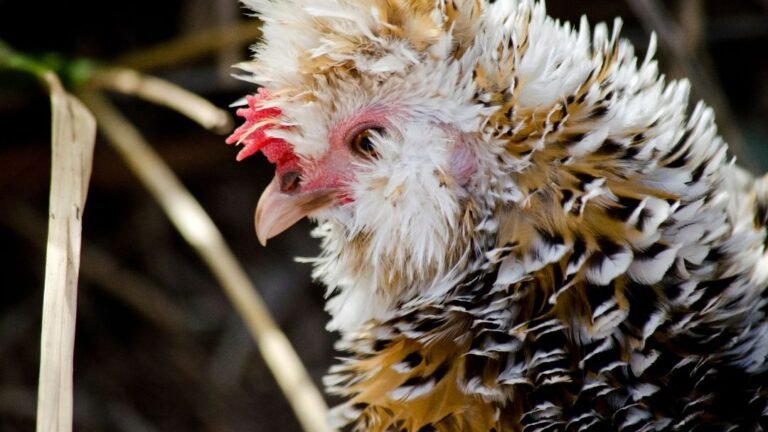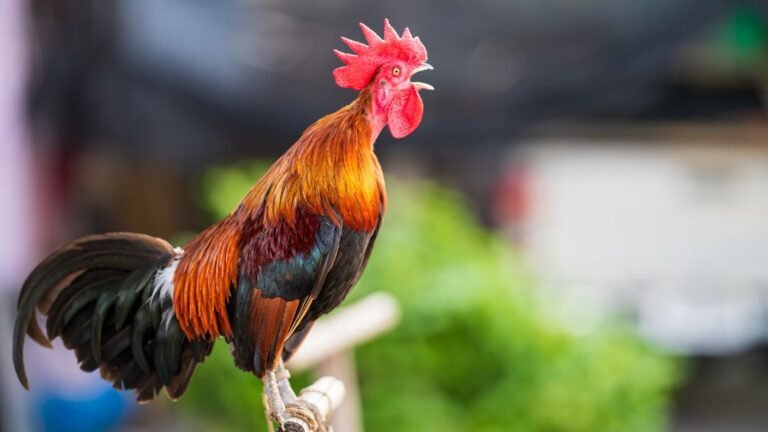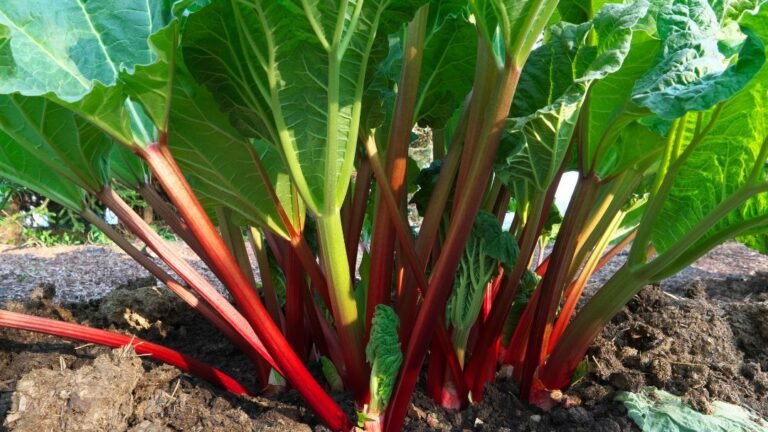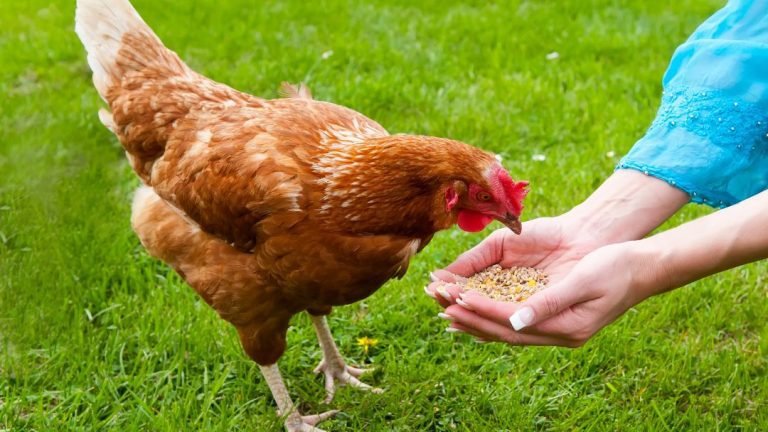Free chicken saddle patterns are available in a printable PDF apron format. These patterns provide a convenient and cost-effective way to protect your chickens from injuries and promote their well-being.
With a wide variety of designs to choose from, you can customize the saddle patterns to suit your needs and preferences. Keep reading to learn more about these printable PDF apron patterns and how they can benefit your flock.
Why Your Chickens Need Chicken Saddles
As a chicken owner, you want to ensure the well-being of your feathered friends. One area that often goes overlooked is protecting chickens’ backs. This is where chicken saddles come into play. These handy aprons are designed to safeguard your chickens from potential injuries, allowing them to roam freely without the risk of harm. In this article, we will explore what chicken saddles are, the importance of protecting chickens’ backs, and the common causes of back injuries in chickens.
Chicken Saddle: What Is It?
A chicken saddle, also known as a chicken apron or chicken jacket, is a protective garment that is placed on the backs of chickens. It acts as a shield, covering their backs and preventing injuries caused by pecking, aggressive mating behavior, and rough handling by other chickens. Chicken saddles are typically made from durable and washable materials such as fabric or vinyl, ensuring long-lasting protection for your flock.
Importance Of Protecting Chickens’ Backs
The well-being of your chickens should always be a top priority. By utilizing chicken saddles, you can provide essential protection to their backs, which are particularly vulnerable to injuries. Just like humans, chickens can experience pain and discomfort from wounds and abrasions. Moreover, when a chicken’s back is injured, it can lead to a decrease in egg production and overall health. By proactively using chicken saddles, you can prevent these issues and promote a happy and healthy flock.
Common Causes Of Injury To Chickens’ Backs
There are various factors that can cause injuries to chickens’ backs. Understanding these common causes can help you take the necessary precautions to protect your flock. Some of the prevalent causes include:
- 1. Pecking order disputes: Chickens naturally establish a pecking order within their flock. This hierarchical structure can result in aggressive behaviors, including pecking at each other’s backs.
- 2. Mating injuries: Roosters can be quite enthusiastic during mating, which may result in injuries to the hens’ backs due to their sharp talons and rough handling.
- 3. Environmental hazards: Rough surfaces, sharp objects, or wire fencing in the coop or run area can cause scrapes, cuts, or abrasions on a chicken’s back.
By addressing these common causes of injuries and utilizing chicken saddles, you can ensure the safety and well-being of your chickens.
Understanding Different Chicken Saddle Patterns
When it comes to protecting your feathered friends, chicken saddles provide a practical solution. The right saddle pattern can help safeguard your chickens from injuries, feather loss, and potential pecking. But with so many options available, it’s important to understand the different chicken saddle patterns and how they can benefit your flock. In this section, we will explore the types of materials used, design considerations, and popular chicken saddle patterns that are available. So let’s dive in and explore the world of chicken saddle patterns!
Types Of Materials Used For Chicken Saddles
Chicken saddles are commonly made from a variety of materials to ensure durability and comfort. Some popular options include:
- Cotton fabric: Cotton is a common choice due to its softness and breathability. It provides a comfortable fit for your chickens while allowing for proper air circulation.
- Denim: Denim chicken saddles are known for their durability. This fabric can withstand the rigors of outdoor environments and offer reliable protection.
- Flannel: Flannel saddles provide warmth and insulation, making them ideal for colder climates.
- Nylon: Nylon saddles are water-resistant and easy to clean, making them a practical choice for chickens that spend a lot of time in damp or muddy areas.
Choosing the right material for your chicken saddles is crucial for ensuring the comfort and well-being of your flock.
Design Considerations For Chicken Saddles
When designing chicken saddles, certain factors should be considered to optimize their effectiveness and functionality. Here are some important design considerations:
- Sizing: Chicken saddles should be tailored to fit your specific chicken breeds. Proper sizing ensures a secure and comfortable fit.
- Attachment method: The attachment method should be secure enough to keep the saddle in place but also easy to remove for cleaning or adjustment.
- Protection coverage: The saddle should cover the areas prone to feather loss, injuries, or pecking, such as the back and shoulders.
- Flexibility: A good chicken saddle design allows for natural movement and flexibility, ensuring your chickens can roam and forage without restriction.
By considering these design aspects, you can maximize the effectiveness of your chicken saddles and provide the best protection for your flock.
Popular Chicken Saddle Patterns Available
Now that we’ve explored the materials used and design considerations, let’s take a look at some popular chicken saddle patterns that you can find:
| Pattern Name | Features |
|---|---|
| The Basic Saddle | A simple pattern suitable for beginners. Provides coverage for the back and shoulder area. |
| The Wing Protector | A pattern designed to protect the wing feathers specifically. Ideal for chickens prone to aggressive pecking. |
| The Hooded Saddle | This pattern offers extended coverage, including a hood that protects the head and neck area. |
| The Custom Fit | A customizable pattern that allows you to create a perfect fit for your chicken’s unique measurements. |
These are just a few examples of the many chicken saddle patterns available. You can select the one that best suits your chicken’s needs and preferences.
Now that you have a better understanding of different chicken saddle patterns, you can make an informed decision when it comes to selecting the right saddles for your flock. Remember to consider the materials used, design considerations, and explore the variety of patterns available to find the perfect fit for your feathered friends!
How To Choose The Right Chicken Saddle Pattern
When it comes to protecting your chickens and keeping them comfortable, chicken saddles are a great solution. These apron-like accessories provide cover and support for your chickens’ backs, preventing feather loss and injury. With a wide range of free chicken saddle patterns available in printable PDF format, choosing the right pattern for your feathered friends can seem overwhelming. In this post, we’ll explore the key factors to consider when selecting a pattern, including matching the pattern to your chicken’s size and breed, as well as assessing the level of protection provided. Let’s dive in!
Factors To Consider When Selecting A Pattern
When it comes to choosing the perfect chicken saddle pattern, there are a few important factors to keep in mind. These factors will help ensure that the pattern you select fits properly, provides adequate protection, and ultimately keeps your chickens happy and healthy.
Matching The Pattern To Your Chicken’s Size And Breed
One of the first factors to consider is matching the pattern to your chicken’s size and breed. Just like humans, chickens come in different shapes and sizes, so it’s essential to choose a pattern that is tailored to your specific breed. Some breeds have larger body structures, while others are more petite. By selecting a pattern that aligns with your chicken’s size and breed, you can ensure a snug and comfortable fit.
Assessing The Level Of Protection Provided By The Pattern
Another crucial factor to consider is the level of protection provided by the pattern. Chicken saddles should not only cover the chicken’s back but also the wings and tail feathers to prevent injury. Different patterns offer varying degrees of protection, so it’s essential to assess the coverage provided. Look for patterns that include reinforced stitching and additional layers of fabric in high-risk areas, such as the wings and tail. This extra protection will help shield your chickens from pecking, aggressive roosters, and other potential hazards in the coop.
In addition to these factors, it’s also worth considering the comfort and flexibility of the pattern. Chickens need to move and stretch freely, so choose a pattern that allows for natural movement without restricting their range of motion.
By taking the time to evaluate these factors, you can select a chicken saddle pattern that not only fits your chicken’s size and breed but also provides the optimal level of protection. So go ahead and explore the printable PDF options available and give your chickens the comfort and care they deserve!
Step-by-step Guide To Making A Chicken Saddle
Chickens are beloved pets for many people. However, sometimes these adorable creatures can experience feather loss due to feather pecking or overmating. To protect their feathers and skin, chicken owners often use chicken saddles. A chicken saddle is a small apron-like garment that covers the back of the chicken. Instead of splurging on store-bought saddle patterns, why not try making your own? In this step-by-step guide, we’ll show you how to create custom chicken saddles using printable PDF apron patterns.
Gather The Necessary Materials
Before diving into the saddle-making process, gather the following materials:
- Fabric: Choose a sturdy fabric such as cotton or denim that can withstand outdoor use and frequent washing.
- Printable PDF pattern: Look for free chicken saddle patterns online, download them, and make sure you have them printed out.
- Measuring tape: For accurate measurements of your chicken’s back.
- Scissors: Use fabric scissors to cut the fabric and pattern.
- Thread: Choose a thread color that matches or complements your fabric.
- Needle or sewing machine: Use a needle and thread if you prefer hand sewing, or a sewing machine for quicker results.
- Pins: These will help you hold the fabric together while sewing.
- Elastic: Opt for a durable elastic band that can securely fasten the saddle.
Preparing The Fabric And Measurements
Once you have your materials ready, it’s time to prepare the fabric and take measurements:
- Spread out the fabric on a clean, flat surface.
- Place the printable PDF pattern on top of the fabric, ensuring it is aligned correctly.
- Use fabric scissors to carefully cut around the pattern, creating two fabric pieces: one for the top and one for the bottom of the saddle.
- Remove the pattern and set it aside for future use.
- Take your measuring tape and measure the length and width of your chicken’s back. Add an extra inch to each measurement to allow for seam allowance.
Sewing And Assembly Instructions
Now that you have your fabric pieces and measurements ready, it’s time to sew and assemble the chicken saddle:
- Take the fabric piece meant for the top of the saddle and fold it in half, right sides facing each other.
- Sew along the longer side, leaving one of the shorter sides open for turning the fabric inside out.
- Turn the fabric inside out, ensuring the sewn edge is now on the inside.
- Press the fabric with an iron to flatten any wrinkles and create a neat finish.
- Repeat steps 1-4 for the fabric piece meant for the bottom of the saddle.
- With both fabric pieces prepared, place the bottom piece on a flat surface, right side up.
- Position the top piece over the bottom piece, aligning the edges.
- Pin the two fabric pieces together, making sure they are secure.
- Sew around the edges of the two fabric pieces, leaving a small opening for inserting the elastic.
- Insert the elastic through the opening, ensuring it spans the entire length of the saddle.
- Sew the open end closed, securing the elastic in place.
- Trim any excess threads and check for any loose seams.
And voila! You’ve successfully created a chicken saddle to protect your feathered friend’s back. Remember, proper care and regular cleaning are important to maintain the saddle’s functionality and comfort for your chicken. Now you have a practical solution to help your chicken sport a fashionable and protective accessory!
Tips And Tricks For A Successful Chicken Saddle Project
Whether you’re a seasoned sewist or just starting out, creating a chicken saddle can be a fun and rewarding project. To help ensure your chicken saddle turns out perfect, here are some handy tips and tricks to keep in mind:
Troubleshooting Common Issues During The Sewing Process
Sewing can sometimes present challenges, but don’t worry, we’ve got you covered. Here are some common issues you may encounter when sewing your chicken saddle and how to overcome them:
- Uneven stitching: To prevent uneven stitching, make sure you have a steady hand and maintain a consistent seam allowance. Using the markings on your sewing machine as a guide can be helpful.
- Misaligned pattern pieces: Accurate cutting is crucial for a well-fitting chicken saddle. Double-check your pattern placement and use pins or clips to secure the pieces before stitching. Adjust as needed to ensure proper alignment.
- Thread tension issues: Incorrect thread tension can lead to loose stitches or thread breakage. Before starting your project, test your thread tension on a scrap piece of fabric to ensure it’s set correctly.
- Misplaced darts or pleats: Darts and pleats help provide shape and fit to the chicken saddle. Take extra care in marking and sewing these elements according to the pattern instructions, to avoid any fit issues.
- Snagged fabric: Chicken saddle patterns often involve multiple layers of fabric. To prevent fabric from getting caught or snagged during sewing, use sharp fabric shears and go slow when sewing through bulky areas.
- Inconsistent stitch length: Maintaining a consistent stitch length is important for both aesthetics and functionality. Make sure your machine is set to the desired stitch length and check periodically to ensure it hasn’t shifted during sewing.
Choosing The Right Thread And Needle For Durability
When it comes to the durability of your chicken saddle, thread and needle selection play a crucial role. Follow these guidelines to ensure you’re using the right materials:
- Thread: Opt for a strong and durable thread, such as polyester or nylon thread, which can withstand the wear and tear of a chicken’s movements. Avoid using weak or lightweight threads that may break easily.
- Needle: Choose a needle size that matches the weight of the fabric you’re using for your chicken saddle. For heavier fabrics, such as denim or canvas, use a larger needle size to prevent it from breaking or bending during sewing.
Adding Personalized Touches To The Chicken Saddle
Looking to make your chicken saddle more unique? Here are some ideas to personalize your creation:
- Fabric choices: Consider using patterned or colorful fabrics to add visual interest to your chicken saddle. You can even incorporate themed prints or fabrics that reflect your personal style.
- Embroidery or appliqué: Personalize your chicken saddle further by adding embroidery or appliqué designs. Whether it’s your chicken’s name, fun patterns, or decorative elements, these details can make your chicken saddle one-of-a-kind.
- Trim and embellishments: Experiment with different trims, like lace or ribbon, to enhance the aesthetic appeal of your chicken saddle. Be mindful of the materials and ensure they are securely attached to withstand your chicken’s activities.
With these tips and tricks, you’re well on your way to crafting a successful chicken saddle. Happy sewing!
Conclusion
These free chicken saddle patterns offer a practical and stylish solution to protect your backyard hens. With the convenience of a printable PDF apron, you can easily create custom saddles to keep your chickens safe and comfortable. Whether you’re a beginner or experienced DIY enthusiast, these patterns are a great resource to add a touch of fun and functionality to your poultry needs.
Happy crafting!




